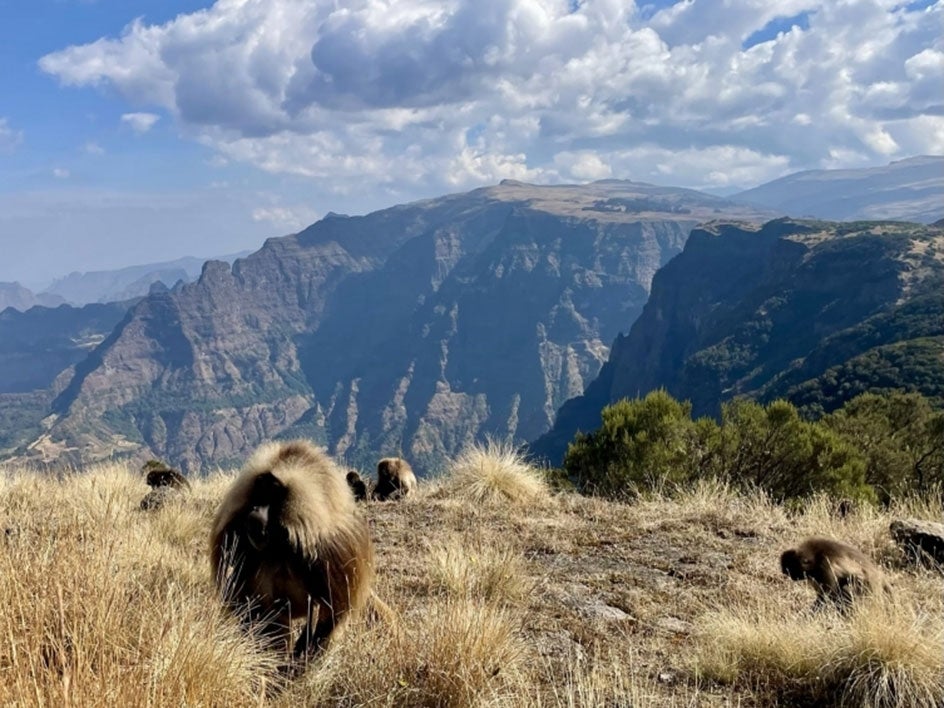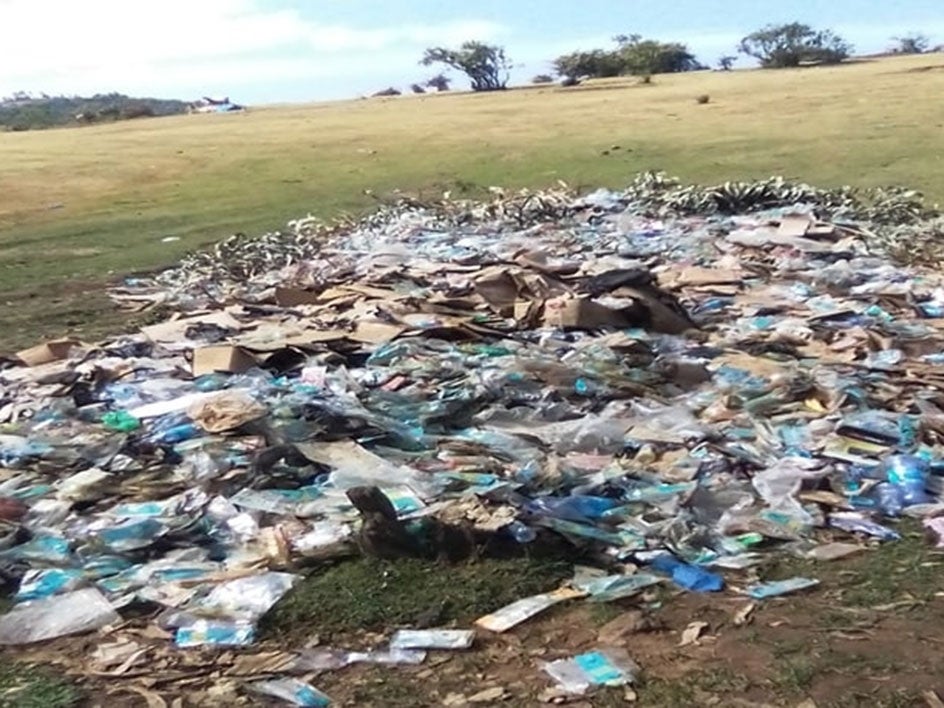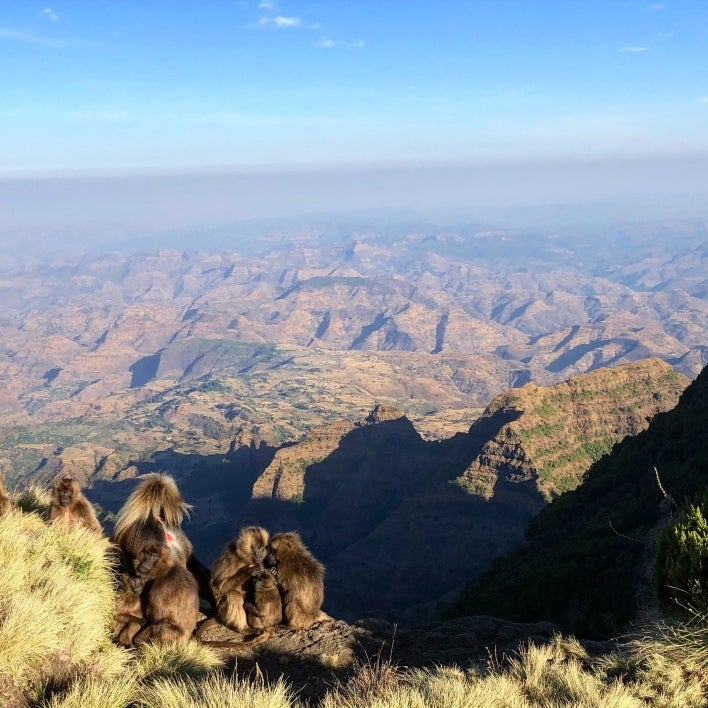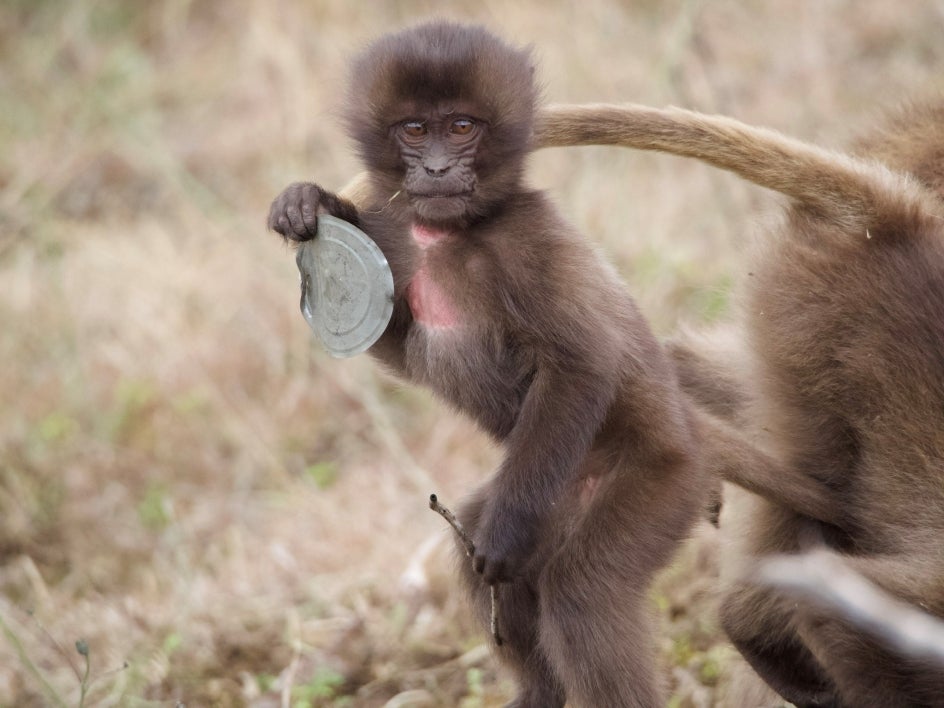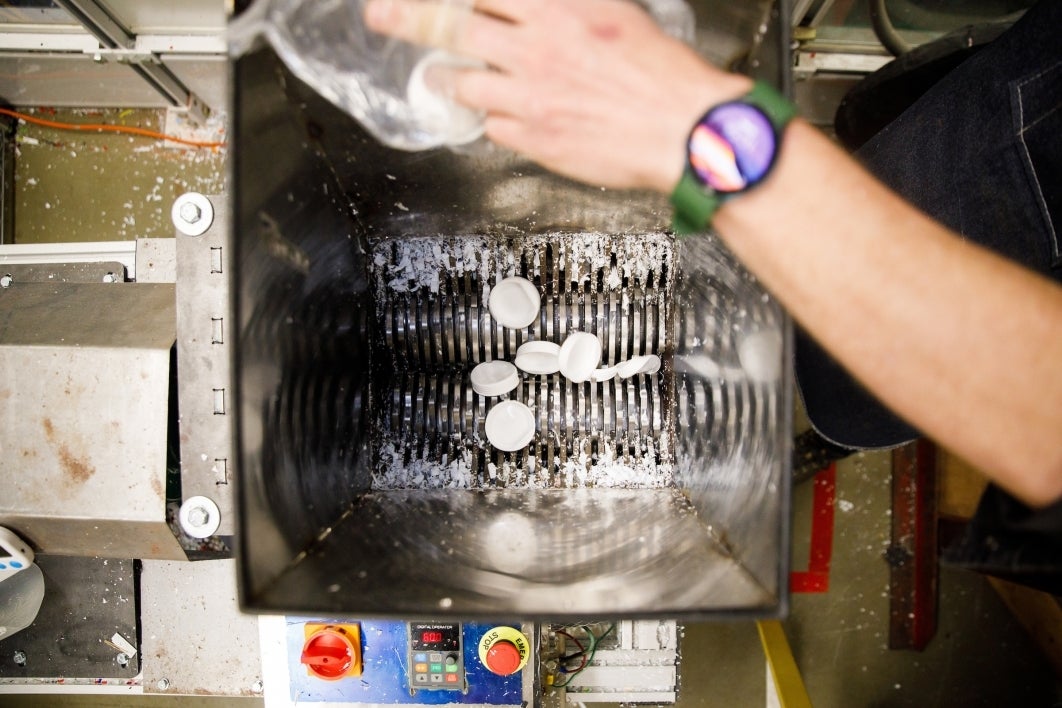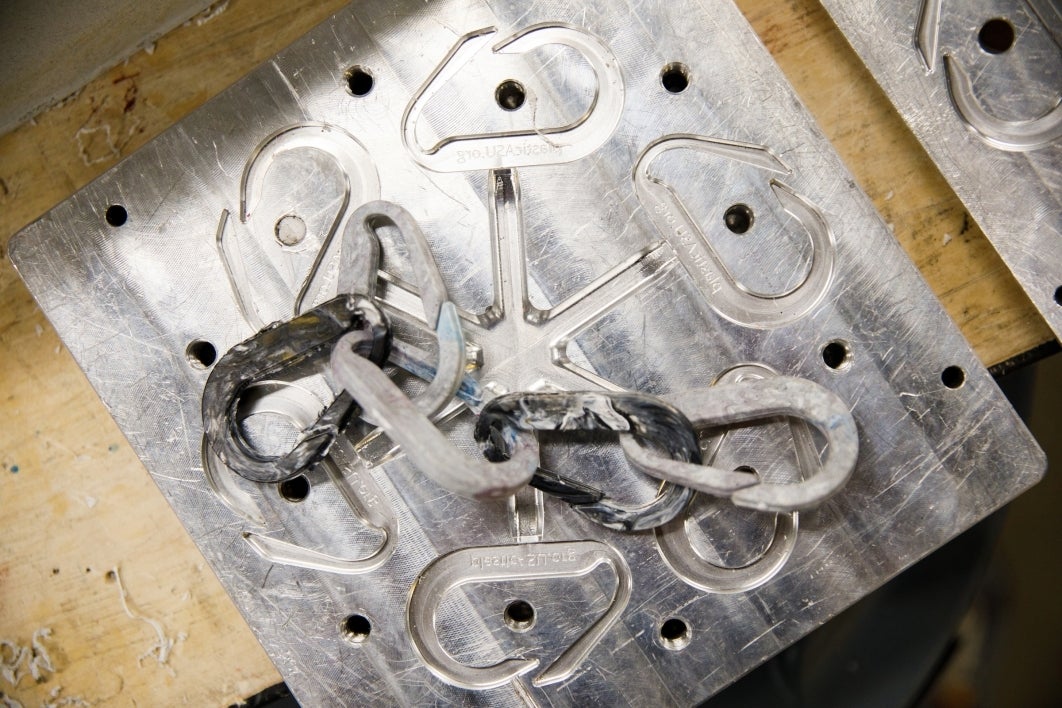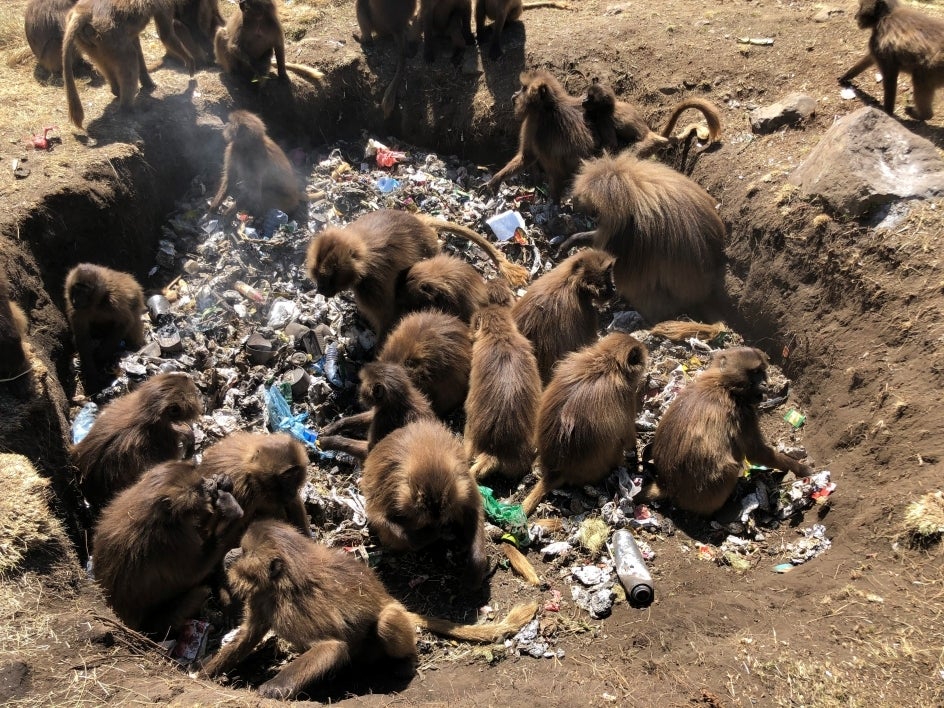ASU team helps protect World Heritage Site in Ethiopia

A male gelada along the escarpment in the Simien Mountains National Park. Photo courtesy India Schneider-Crease
The Simien Mountains National Park in Ethiopia has unique high-altitude ecosystems and is home to some of the rarest species in the world, according to India Schneider-Crease.
Schneider-Crease is an evolutionary anthropologist who has spent over a decade studying the gelada monkeys that live in the mountains. She is co-director of the Simien Mountains Gelada Research Project and an assistant professor at the School of Human Evolution and Social Change at Arizona State University. Her research focuses on understanding the ecology of infectious diseases in geladas.
However, her latest project doesn’t focus solely on the geladas, but on the environment where they live and the communities that share that environment.
Schneider-Crease is currently leading a two-part project that brings together anthropologists, students, engineers and wildlife conservationists at ASU and from around the world to clean up plastic trash left in this UNESCO World Heritage Site and turn it into income for communities in Ethiopia.
“Our gelada research does not take place in a vacuum,” Schneider-Crease said. “Our research takes place in these really unique, endangered Afromontane and Afro-Alpine ecosystems in the Simien Mountains National Park in Ethiopia. And this work is only able to take place with the support of the incredible communities who live around the park.”
She said among the endangered species in the area are the Walia ibex, which only lives in the Simien Mountains, and the Ethiopian wolf, the world's rarest canine.
Where it all began
In 2017, the Simien Mountains Research Project team started a community clean-up program. Those who live around the park and need extra money can volunteer to help clean up the park once a month for a small stipend.
But when conflict erupted in 2020, the cleanup project and research on the geladas stopped. Over the next two years, the park was inundated with trash.
“There was an enormous accumulation of trash that we observed once the conflict ended,” Schneider-Crease said. “We saw that the ecosystems and animals were in increased contact with all different kinds of trash, which poses a disease transmission risk and can lead to erosion of the park’s fragile cliffs. In addition, trash in the national park can harm the tourist-based economy of local areas, and the return of tourists — and their trash — can exacerbate the existing situation.”
One of the largest problems is the plastic bottles left in the park by the tens of thousands of tourists every year.
Cleanup and projects
Knowing something had to be done, Schneider-Crease and Ababaw Azanaw, the chief park warden, received funding from the Rapid Response Facility to help clean up.
Schneider-Crease said the project has two parts. The first will be a massive cleanup where more than 100 people from local communities will be assigned a section of the park, and they will collect data on how much and what type of trash is found as they clean.
“The team is also working with a fabrication engineer in Addis Ababa named Gizish Mebratu to build solar compactors that will help remove nonplastic trash from the park in an eco-friendly way,” she explained. “Our regular cleanups (funded by the Beagle Charitable Foundation) will continue to pay local folks to clean the trekking paths and scenic routes on a monthly basis.”

India Schneider-Crease in the field with gelada monkeys in the Simien Mountains National Park in Ethiopia. Photo courtesy India Schneider-Crease
In addition to the cleanups, the Ethiopian Wildlife Conservation Authority and the African Wildlife Foundation are working together to build more sustainable infrastructure to deal with the nonplastic rubbish.
The second part of the project focuses on the plastic bottles left in the park. For the past year and a half, ASU engineering students have worked on building two machines that will shred the plastic bottles and then melt them down to make souvenirs that can be sold back to tourists. This helps remove waste and provides a source of income for the communities surrounding the park.
The team includes engineering students with the ASU chapter of Engineers Without Borders. Students are being mentored by Tyler Eglen, a project manager at the Rob and Melani Walton Sustainability Solutions Service Circular Living Lab. The machine plans came from an open-source community, Precious Plastics, that provides designs for small-scale recycling machines.
Eglen has built several versions of these machines, converting the European metric system-based plans and finding American suppliers. The team wanted to customize the machines so that they work for the Ethiopian communities and their electricity parameters and supplies available.
“The recycling waste system is so broken and needs creative thinking,” Eglen said. “And when we put energy and thought into it, everyone wins. We have less fossil fuels coming out of the ground, we have less waste in landfills, we are taking down less trees, we are producing less greenhouse gas and we are creating jobs.”
Kaleb Tefera, a computer science student at ASU, is a member of Engineers Without Borders at ASU and the co-lead of this project. Tefera is from Ethiopia and was excited to join the team and give members an international perspective and input on what may or may not be culturally appropriate.
“I feel like this project is really personal,” Tefera said. “I remember when I first heard about the team, I said that’s where I’m from and I wanted to give a perspective — because this is an American team and they are trying to fix an Ethiopian problem. I’m helping make a sustainable practice plus helping my country.”
Process and products
The students are designing collection bins for plastic water bottles to be installed at the three main campsites in the park.
Schneider-Crease, Eglen and ASU students will travel to Addis Ababa, the capital of Ethiopia, and will work with engineering students from the Addis Ababa Institute of Technology to build the machines from local materials in the industrial workshop of Mebratu.
Once the machines are built, the team will transport the machines to Debark University, in the town nearest to the national park, where the processing facility will be set up.
It will take an international team to get this project up and running, according to Schneider-Crease, including students and faculty at the Institute of Technology, professional engineers in Addis Ababa, students and faculty at Debark University, the ASU teams and the Limalimo Ecolodge in Debark. The project will also involve collaborations with the Ethiopian Wildlife Conservation Authority, the African Wildlife Foundation and the Nicholas School of the Environment at Duke University.
ASU’s Engineers Without Borders chapter is still determining what the end product will be but has narrowed it down to a type of souvenir that can be decorated and sold to tourists.
Tyler Norkus, who is studying mechanical engineering at ASU, is chaper president and co-lead of the Ethiopia project. He explained that the type of plastic the water bottles are made from affects what the team can create.
“The type of water bottle plastic, PET (polyethylene terephthalate), needs to be dried down to a very low humidity level before its melted — otherwise the final product is very brittle,” Norkus said. “We found this out during testing with Eglen.”
Eglen explained that because they can’t confirm where the plastic is coming from or what those plastic bottles have touched, they can’t make food-grade products. They also can’t recycle the plastic bottles into construction materials like bricks.
Geladas sift through trash, including plastic water bottles, in the Simien Mountains National Park. Photo courtesy India Schneider-Crease
“Plastics are all made out of fossil fuels. They are petroleum products,” Eglen said. “They are by nature flammable. If you want to make it a building material, you need to put in fire retardant. This is another additive and another level of chemistry you have to throw on top. Again, it gets more complicated.”
The team is currently experimenting with 3D maps of the Simien Mountains that could be painted and sold. Eglen said they would use available satellite data, make it into a metal mold, then inject the recycled plastic into that mold, making a topographical model of the park.
“One of the big things I try to push against, though, is that you don’t want to make more waste out of plastics,” Eglen said. “We don’t make giveaways that are just cheap and easy. We want these things to last; otherwise we’re not actually doing anything for the recycling system or for sustainability — we are just making more waste.”
This collaboration is offering students at ASU and in Ethiopia a hands-on approach to a real-world problem, according to Schneider-Crease and Eglen. This World Heritage Site and the people who live nearby mean a lot to Schneider-Crease, and she said she wants to be able to support the environmental, economic and community health of the area for many years to come.
“Very importantly, the idea is that we work with students in Ethiopia to build on the knowledge that students at ASU have been developing,” Schneider-Crease said. “We are not just going and dropping off machines. Our goal is to expand on our collaborations and build on this project or create new projects according to community demand, and to go back every year. This project is about more than recycling or trash. It’s about exchanging information, creating opportunities for hands-on, experiential learning for both American and Ethiopian students, and building sustainable international collaborations.”
More Environment and sustainability

Charles Redman, founder of the School of Sustainability, faces a new adventure: Retirement
At the retirement celebration for Charles Redman on Oct. 22, two messages persisted: Redman’s contributions to Arizona State…

10 climate insights to guide our future
A group of globally renowned social, natural and climate scientists has once again convened to offer their newest annual…

The future is green: Job demand translates to high employability for ASU sustainability grads
A 2023 report by Forbes on the state of green jobs confirmed what Arizona State University has been trumpeting for years:…
